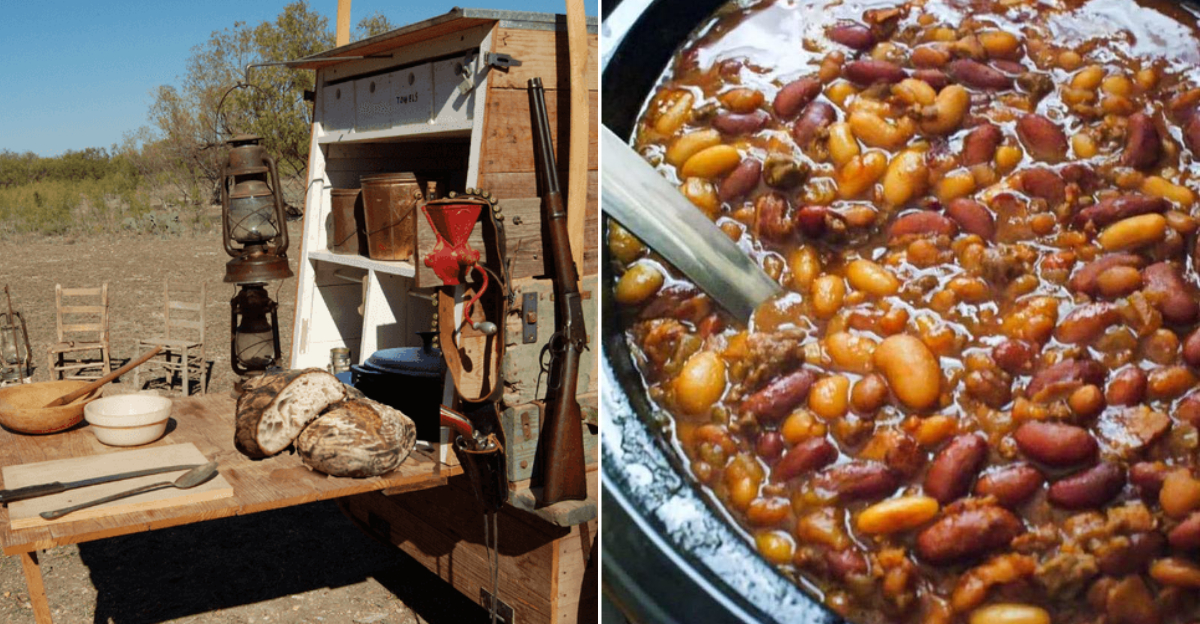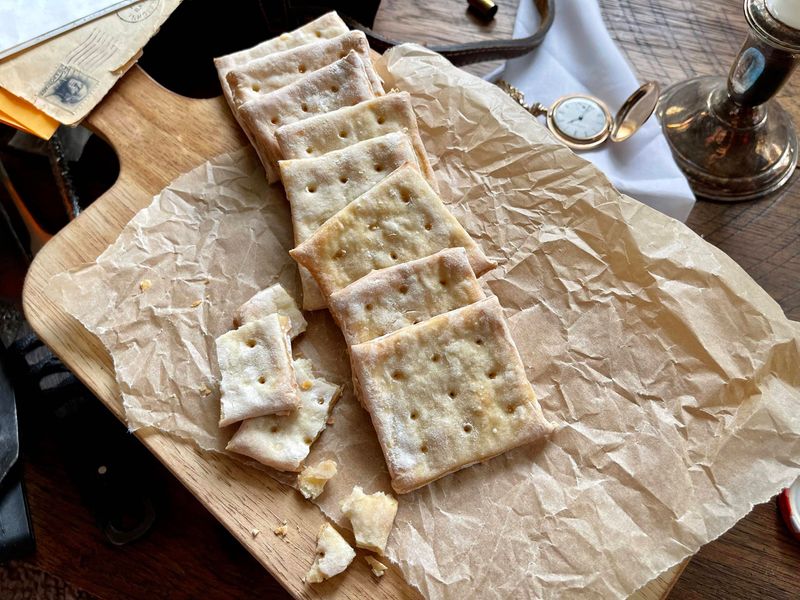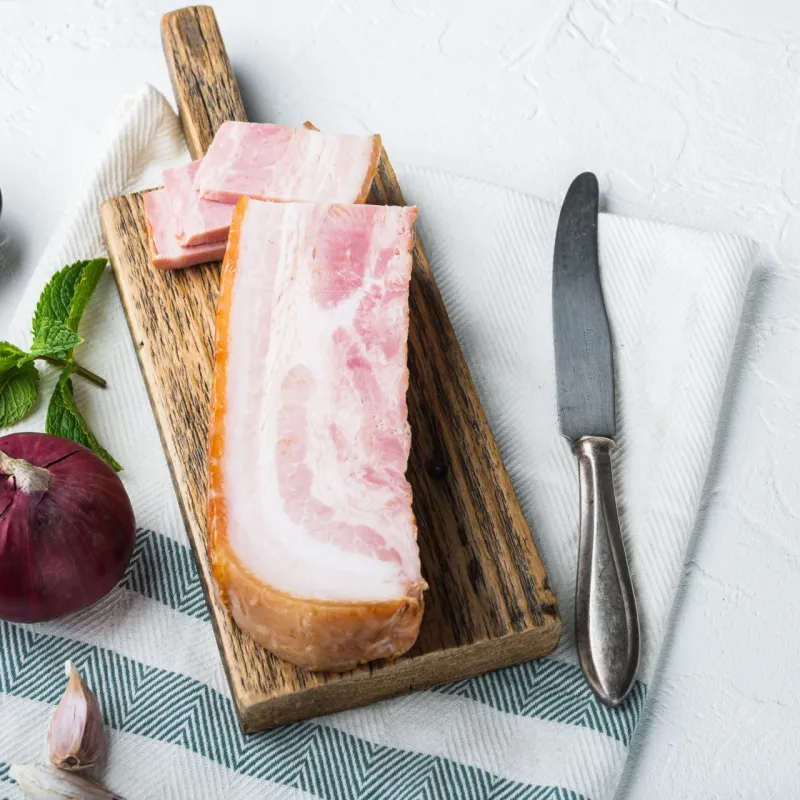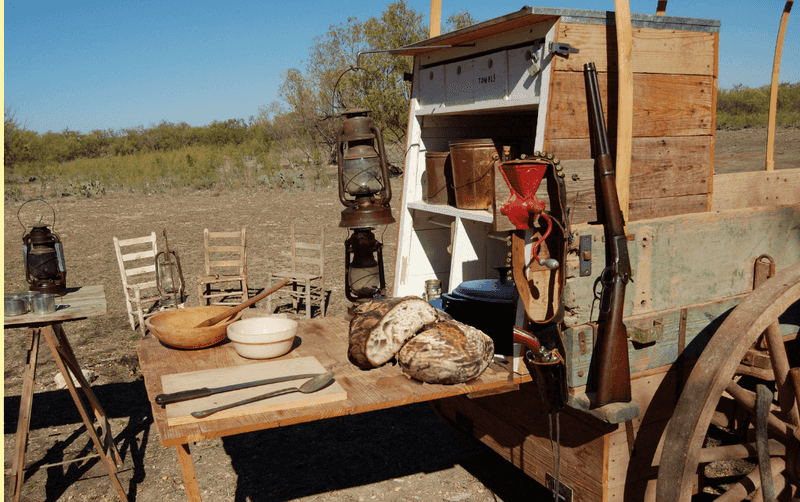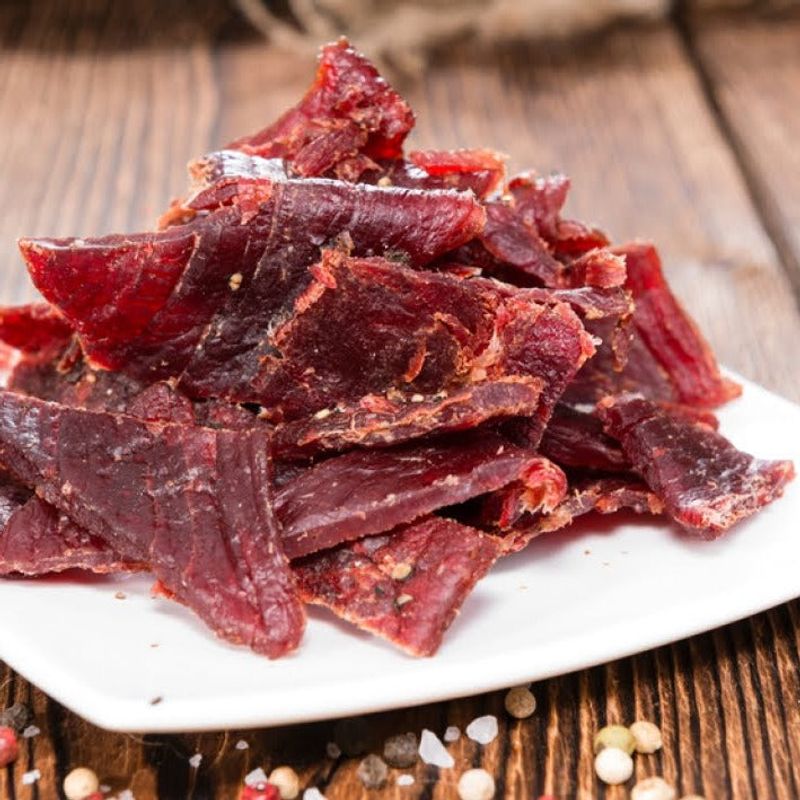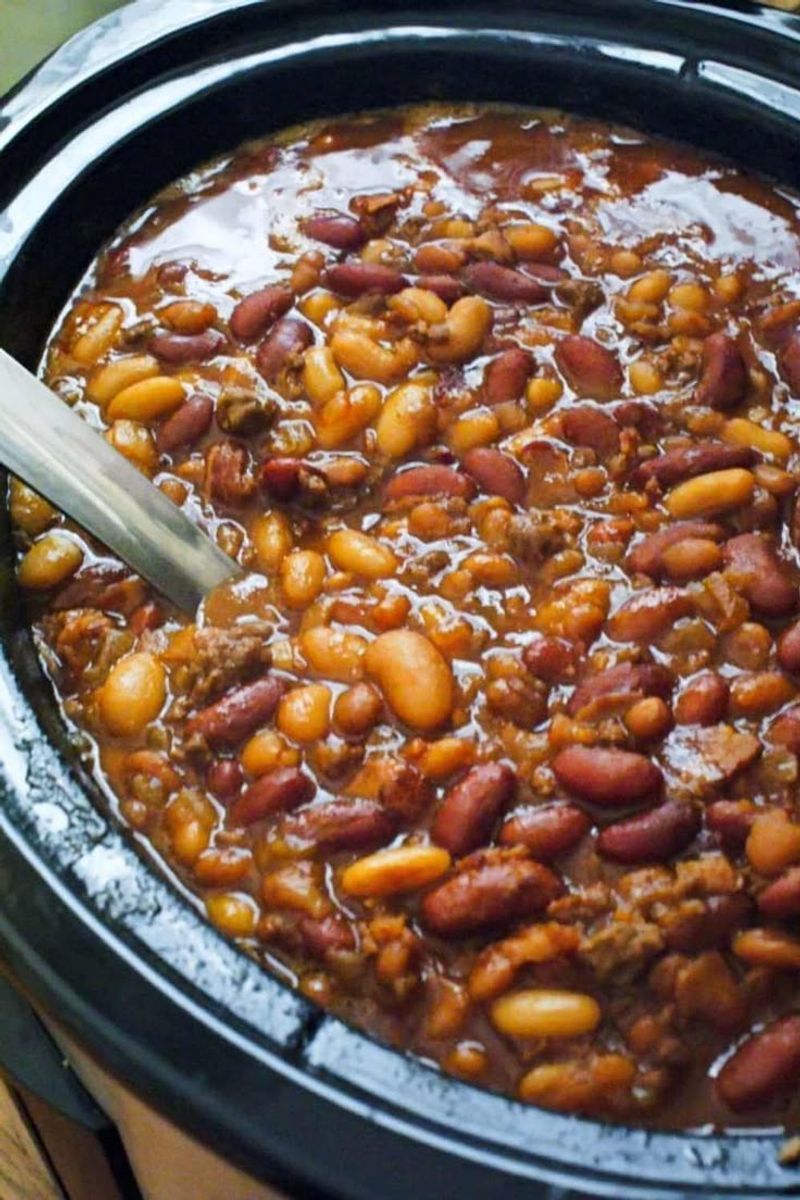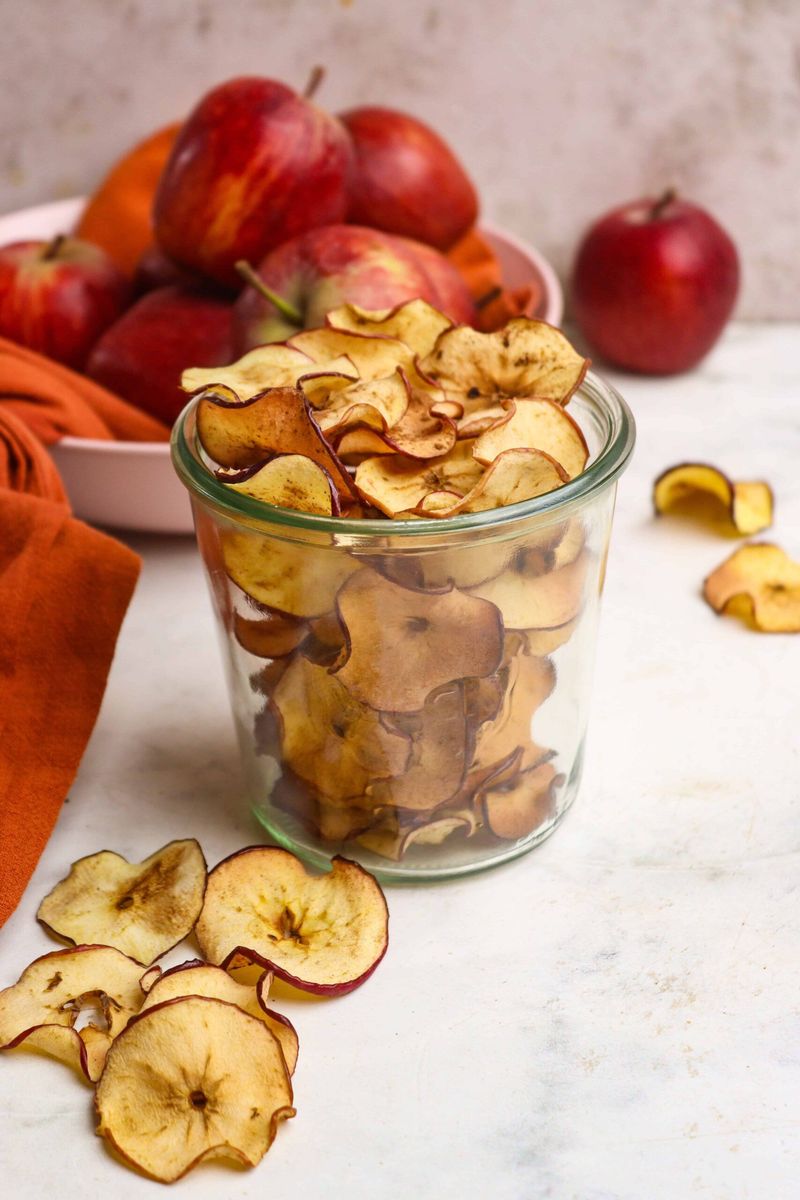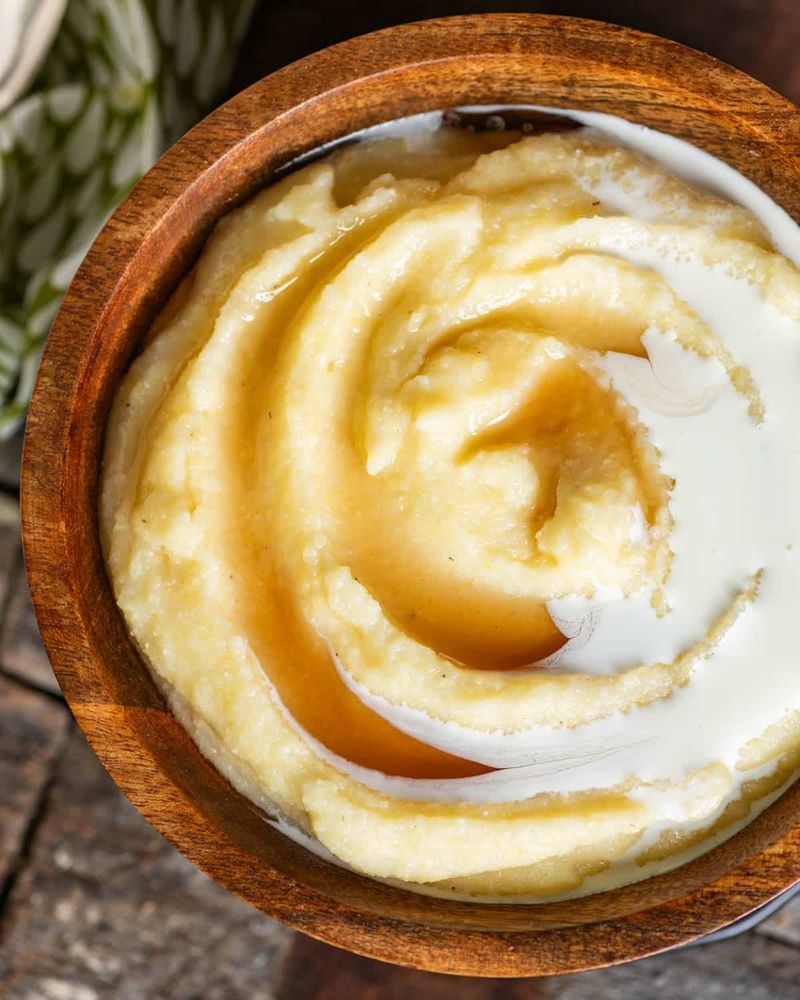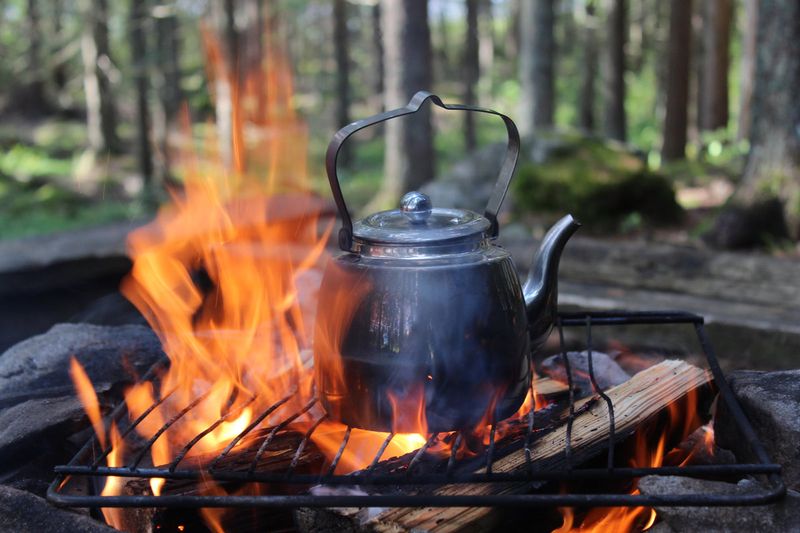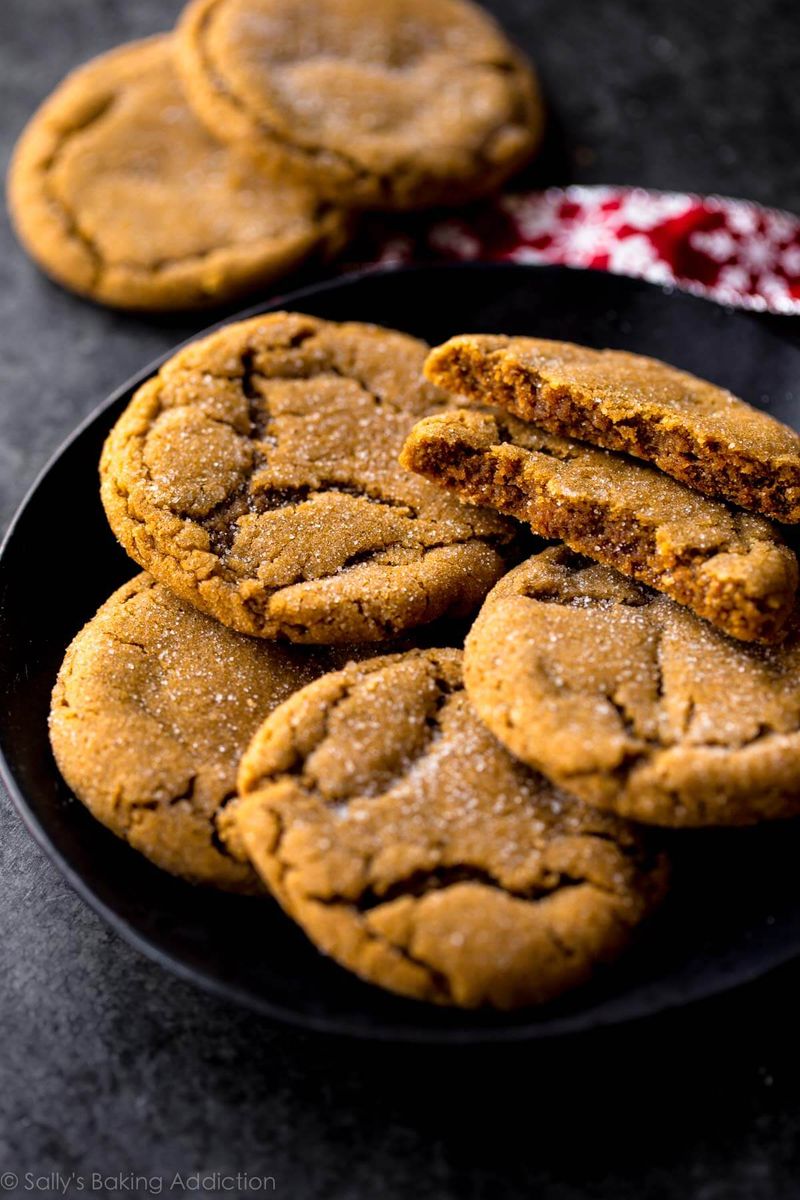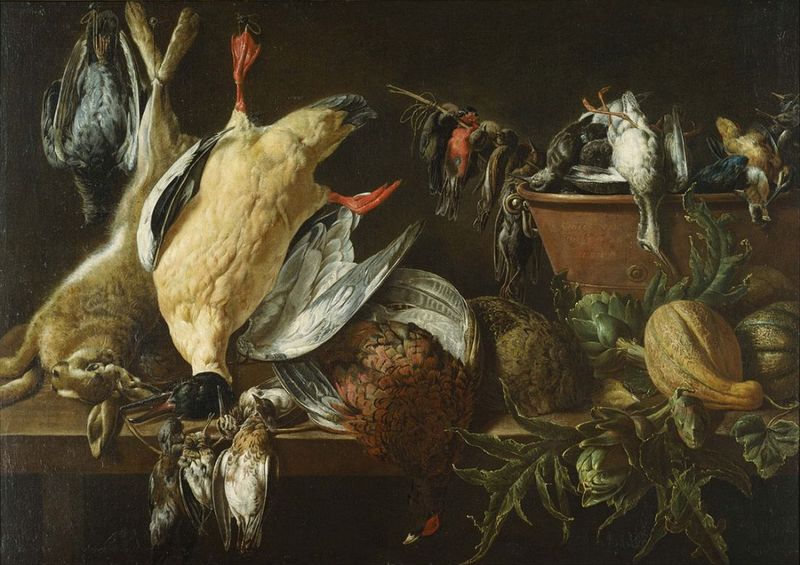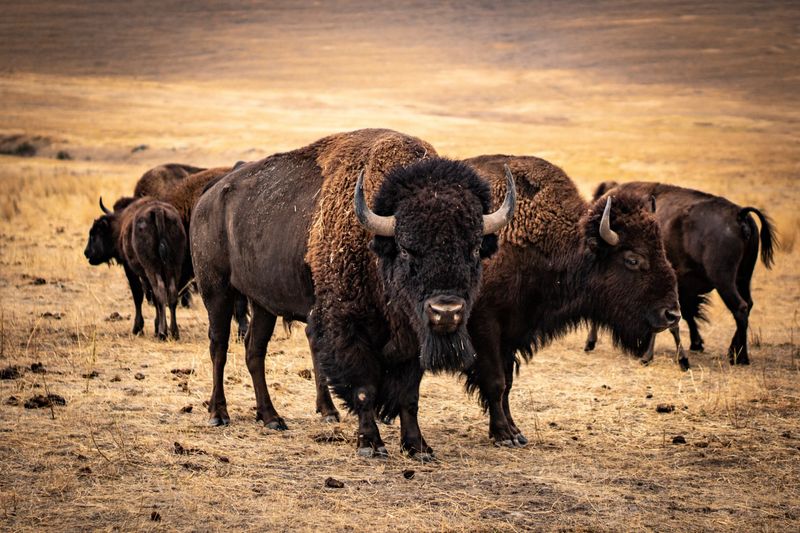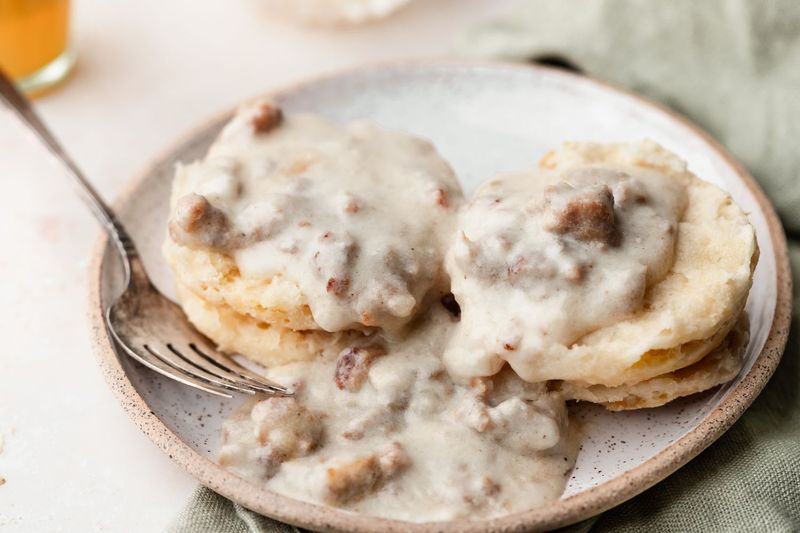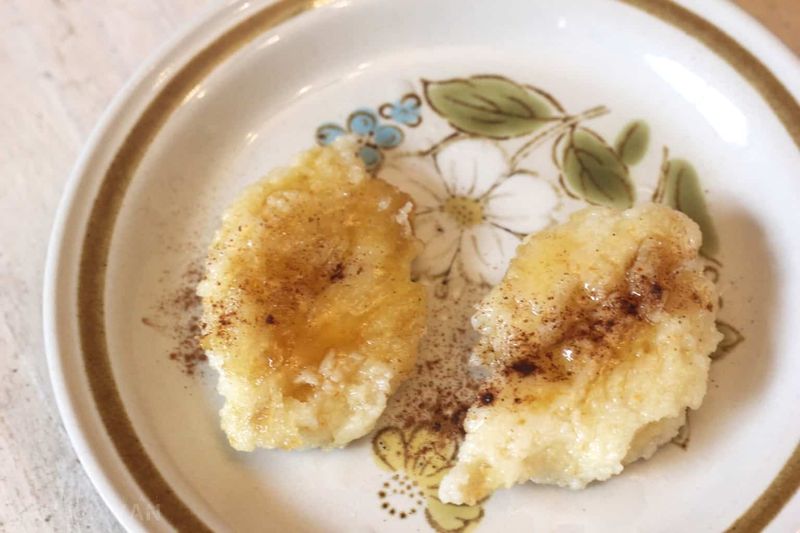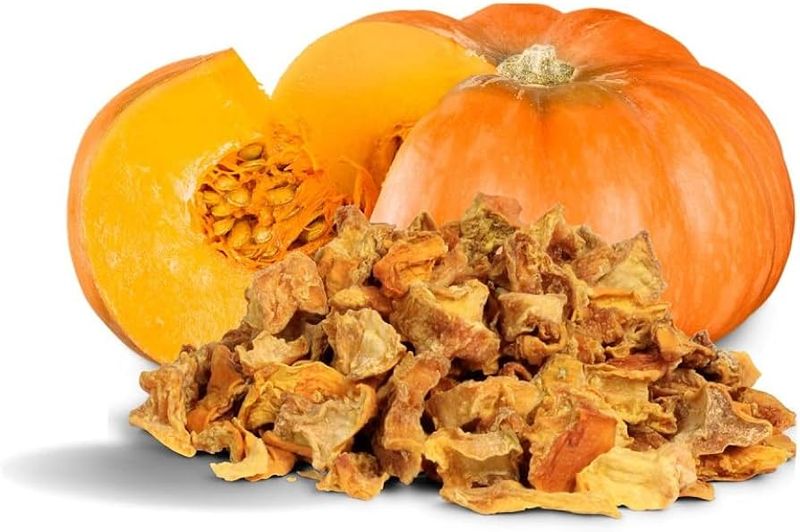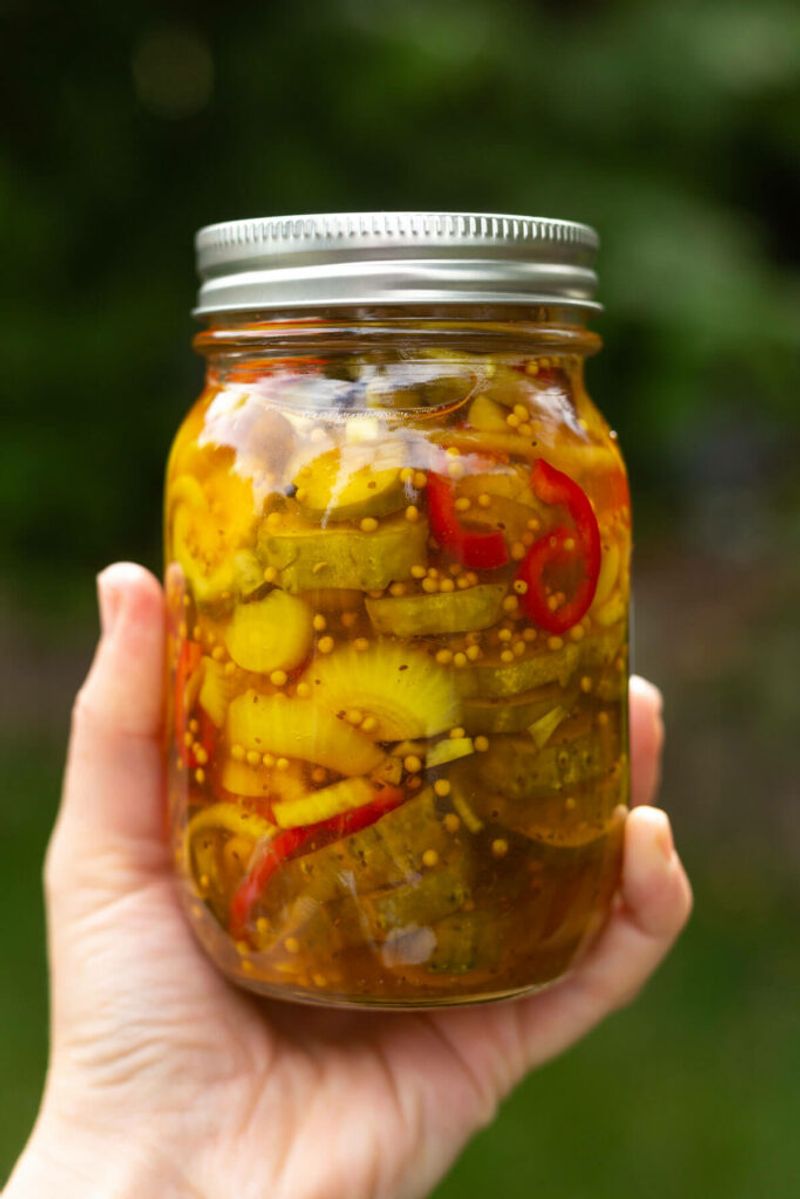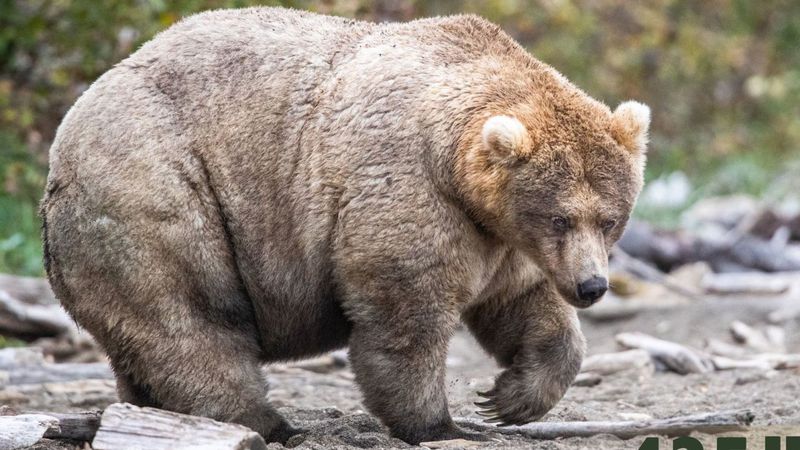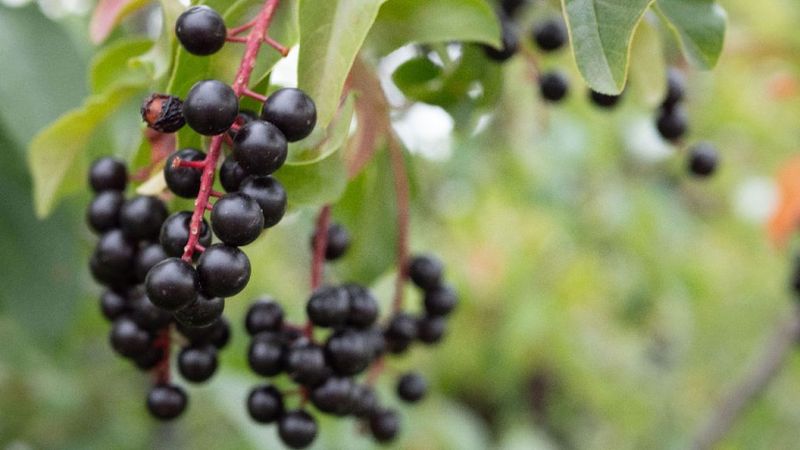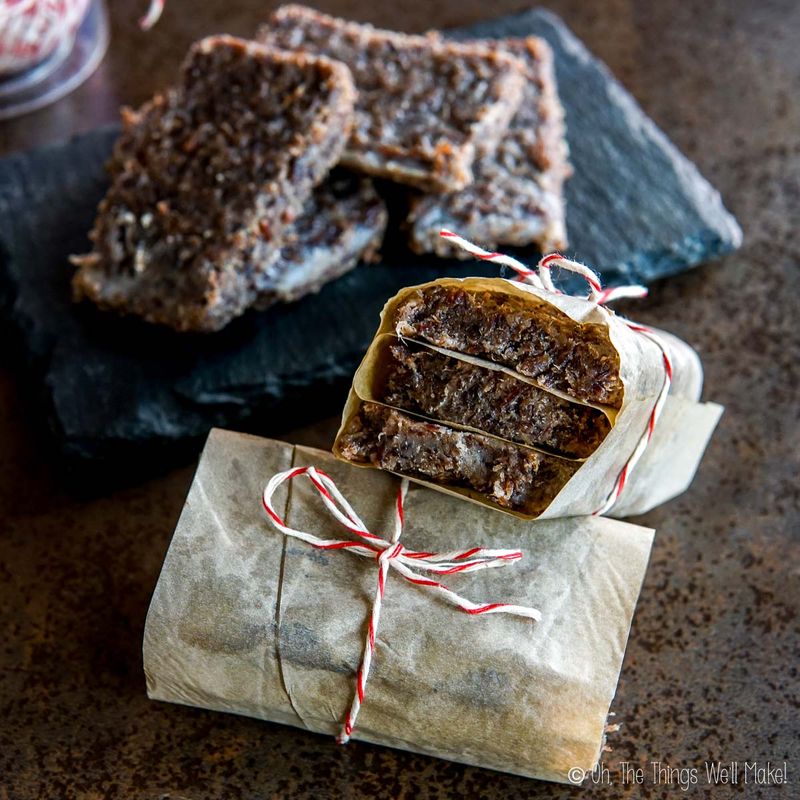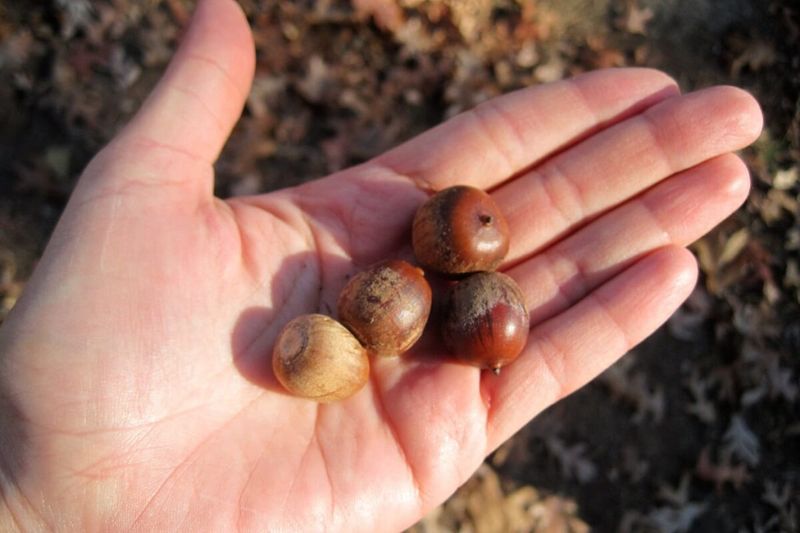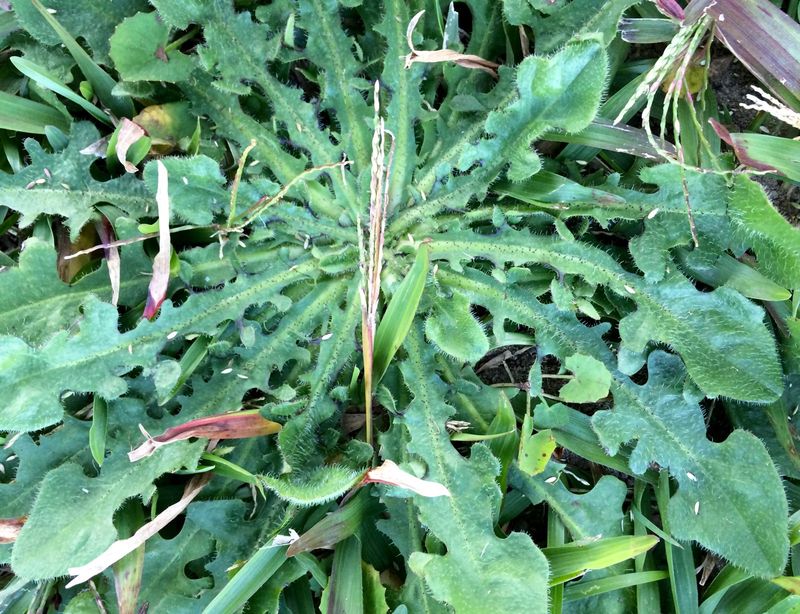Journeying through the Wild Old West was no small feat for pioneers. In an era defined by scarcity and rugged landscapes, these brave individuals had to rely on their wits and a humble selection of foods to keep them going.
This list highlights 20 surprising foods that were pivotal in helping pioneers survive their arduous travels, offering a glimpse into the ingenuity and resilience required to thrive in such challenging conditions.
1. Hardtack
Imagine biting into a biscuit that could double as a paperweight! Hardtack was a staple for pioneers because of its incredible shelf life. Made from just flour and water, this rock-hard treat could last for months, making it a reliable travel companion.
Pioneers would often soak it in coffee or stew to soften it up, turning this simple biscuit into a versatile meal component. Its durability and simplicity made it invaluable, especially when food supplies were scarce. A testament to pioneer ingenuity, hardtack was more than just food – it was a lifeline.
2. Salt Pork
Salt pork was the unsung hero of pioneer diets, a fatty, heavily salted meat that provided both energy and flavor. Preserved with an abundance of salt, this meat could be stored for long periods, making it a key protein source.
Whether fried or boiled, salt pork added a hearty richness to meals, pairing well with beans or bread. Its saltiness was balanced by the right preparation techniques, allowing pioneers to enjoy a savory meal even in the wildest terrains. As a staple, salt pork was truly a comfort in uncertain times.
3. Sourdough Bread
Sourdough bread wasn’t just food; it was a tradition passed down through generations. Made from wild yeast and a cherished starter, this bread had a distinctive tangy flavor. For pioneers, sourdough was a reliable and comforting staple that could be made with limited ingredients.
Sharing and maintaining the starter became a communal activity, fostering a sense of connection amidst isolation. Its robust nature suited the unpredictable environment of the West, making sourdough as much a part of pioneer life as the wagons themselves.
4. Jerky
Jerky was the perfect travel snack for pioneers, offering a burst of flavor and sustenance in every bite. Made by drying meat, usually beef or bison, it had a long shelf life and was easy to carry on long journeys.
Its chewy texture and smoky taste provided a satisfying, protein-rich option that required no cooking. Whether eaten on its own or added to stews, jerky was a versatile ingredient that kept hunger at bay. For those on the move, this dried delicacy was more than just a snack – it was a survival tool.
5. Beans
Beans were a staple in the pioneer diet, praised for their nutritional value and ability to fill an empty stomach. Dried beans could be stored for long periods and easily cooked over a campfire, making them ideal for the road.
Pioneers often paired beans with salt pork or wild game, creating hearty meals that provided much-needed protein and fiber. The simple act of cooking beans was a comforting ritual, a moment of warmth in the expansive wilderness. Beans were more than sustenance; they were a humble yet vital part of survival.
6. Dried Apples
Dried apples were the pioneers’ secret to adding sweetness and vitamins to their diet, a rare treat in the harsh West. Slices of apples were dried in the sun, creating a portable, non-perishable snack. These were often rehydrated for baking or stewing, transforming simple dishes into something special.
The sweetness of dried apples offered a brief respite from the savory staples that dominated pioneer meals. In a world where fresh fruit was scarce, dried apples provided both nourishment and a taste of the comforts left behind.
7. Cornmeal Mush
Cornmeal mush was the ultimate comfort food for pioneers, a simple yet satisfying dish made from cornmeal and water or milk. Its smooth texture and mild flavor made it a versatile meal option. Often served for breakfast, it could be sweetened with molasses or topped with salt pork for a heartier version.
Cooking cornmeal mush over a campfire was a familiar routine, offering warmth and energy to start the day. This humble porridge was a reminder of the simpler pleasures amidst the uncertainties of pioneer life.
8. Coffee
Coffee was more than just a beverage for pioneers; it was a lifeline in the vast, wild landscapes of the Old West. Often considered a necessity, coffee’s invigorating aroma and taste provided a comforting boost to weary travelers.
Despite scarcity, pioneers would go to great lengths to secure coffee, sometimes trading precious items for a few beans. Brewing coffee over an open flame became a cherished ritual, a moment of respite in a challenging journey. In the rugged terrain, coffee was the fuel that kept the spirit alive.
9. Molasses
Molasses was the sweet secret of the pioneer pantry, used to add flavor and essential minerals to meals. This thick, dark syrup was versatile, often used in baking or to sweeten porridge and breads.
Its rich taste and sticky texture made it a delightful addition that brightened the monotonous diet of the pioneers. In times of scarcity, molasses was a precious commodity, sometimes doubling as a barter item. For those traversing the plains, it was a taste of home and a reminder of better times.
10. Wild Game
Hunting wild game was a lifeline for pioneers, providing fresh meat that was a welcome addition to their diet. From rabbits to squirrels to deer, these animals were hunted across the frontier.
Each successful hunt was a boost to both the morale and the food supplies of a weary group. The meat was often roasted over an open fire, its aroma filling the camp with a sense of accomplishment and survival. Pioneers relied on their hunting skills, making wild game an indispensable part of frontier life.
11. Buffalo Meat
Buffalo meat was the cornerstone of sustenance for pioneers traversing the vast Plains. Rich in flavor and nutrients, it provided the necessary energy for arduous journeys. The abundance of buffalo made it a reliable food source, with every part of the animal being used to avoid waste.
Buffalo jerky and dried strips became essential travel rations, offering a taste of the plains wherever pioneers roamed. The buffalo was more than just a meal; it was a symbol of resilience and abundance in the wild West.
12. Biscuits and Gravy
Biscuits and gravy were the epitome of comfort—a calorie-rich dish that satisfied both hunger and spirit. Made from flour, fat, and meat drippings, they provided a hearty meal that was both filling and flavorful.
The soft, flaky texture of biscuits paired with the rich, savory gravy created a delightful contrast that was hard to resist. For pioneers, enjoying this dish was a slice of normalcy in their unpredictable journey. In the ever-changing landscape of the West, biscuits and gravy were a taste of home.
13. Corn Dodger
Corn dodgers were the go-to snack for pioneers, offering convenience and taste in a small package. These cornbread-like treats were either baked or fried, making them easy to carry on long journeys.
Their dense, satisfying texture made them a favorite, whether eaten on their own or with a dollop of molasses. Corn dodgers were the perfect companion for travelers, providing quick energy and a taste of home. In the unpredictable world of the frontier, these humble snacks offered a familiar comfort.
14. Dried Pumpkin
Dried pumpkin was a versatile staple that added color and nutrition to the pioneer diet. By slicing and drying the pumpkin, pioneers could preserve it for future use, transforming it into stews or baked goods when rehydrated.
The mild sweetness of pumpkin brought a unique flavor to meals, offering a taste of autumn throughout the year. For pioneers, it was a way to ensure that the bounty of the harvest was never far away. Dried pumpkin was more than just food; it was a touch of seasonal joy.
15. Pickled Vegetables
In a world where fresh produce was a luxury, pickled vegetables stood out as a vibrant source of nutrients. Pioneers mastered the art of pickling, preserving vegetables like cucumbers, beets, and cabbage in vinegar. These tangy, crunchy pickles were a rare but valuable addition to meals, providing vitamin C and zest.
The colorful jars lined the shelves of pioneer homes, a testament to ingenuity and foresight. Pickled vegetables were more than just a culinary delight; they were a symbol of adaptability and resourcefulness.
16. Bear Fat
Bear fat was a prized possession for pioneers, used much like lard to enhance cooking and baking. Its rich, smooth texture made it ideal for frying and as a shortening in bread and pastries. This valuable fat was obtained through hunting and rendered for use in various dishes.
Pioneers appreciated its versatility and high caloric content, which provided much-needed energy during strenuous journeys. In the harsh conditions of the frontier, bear fat was more than just an ingredient; it was a crucial ally in survival.
17. Chokecherries
Chokecherries were a hidden gem on the frontier, foraged by pioneers for their unique taste and nutritional benefits. These small, tart berries were often used in pemmican or preserves, adding a burst of flavor to otherwise plain meals.
Their astringency didn’t deter pioneers; rather, it was embraced as a sign of wild authenticity. Chokecherries were a testament to the pioneer’s ability to harness nature’s offerings to their advantage. In a land of scarcity, these berries provided both sustenance and a connection to the untamed wilderness.
18. Pemmican
Pemmican was the ultimate energy bar of the frontier, a dense mix of dried meat, fat, and sometimes berries. This compact food was high in calories and nutrients, making it a favorite among pioneers.
Its long shelf life and portability made pemmican perfect for long journeys, providing sustenance without the need for cooking. Each bite was a blend of flavors, a testament to the resourcefulness of those who crafted it. For pioneers, pemmican was a lifeline in the vast, unforgiving landscapes they traversed.
19. Acorn Meal
Acorn meal was a pioneer innovation, made by leaching tannins from acorns and grinding them into flour. This labor-intensive process resulted in a nutritious, earthy flour that served as a base for breads and porridge.
The unique, nutty flavor of acorn meal set it apart from other grains, offering pioneers a taste of the wilds they traversed. Making acorn meal was a communal effort, a chance to gather and share techniques. In the rugged West, it symbolized the pioneering spirit of using every available resource.
20. Dandelion Greens
Dandelion greens were among the few fresh greens available to pioneers, foraged from the wild to add nutrients to their diet. Rich in vitamins and minerals, these greens were often sautéed or added to soups.
The bitter, earthy taste of dandelion greens was a reminder of nature’s bounty, even in the starkest environments. For pioneers, they were a sign of hope and renewal, a connection to the land that sustained them. In the untamed West, dandelion greens were a precious gift from the earth.
